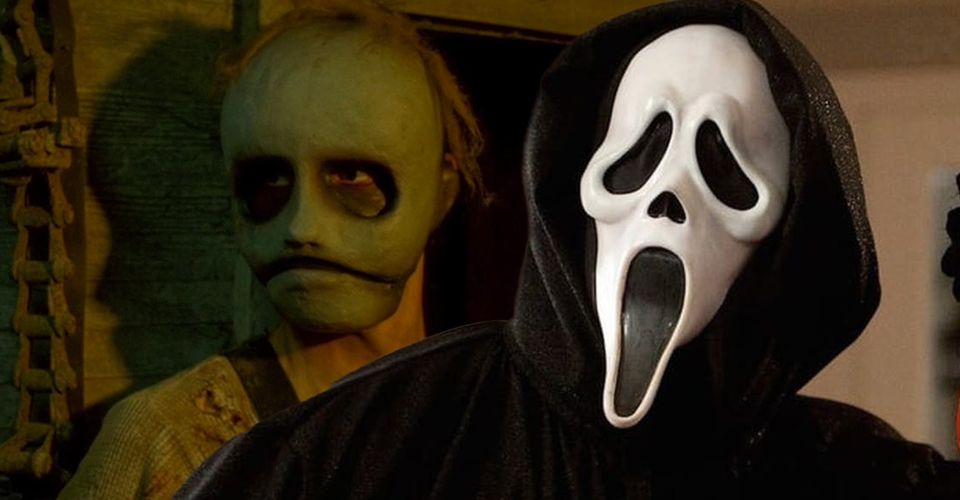How Behind The Mask: The Rise Of Leslie Vernon Honors The Scream Formula

The dark comedy mockumentary Behind the Mask: The Rise of Leslie Vernon had some similarities to the Scream franchise, continuing the formula of meta genre parody. When Wes Craven brought the meta-horror movie vision to audiences, the result was a huge hit and a multi-film franchise. The indie film Behind the Mask took Craven’s vision and honored it with its own innovations, quirks, and style.
In Behind the Mask, a documentary crew follows a man named Leslie Vernon who is training to follow in the footsteps of his heroes, men like Jason Voorhees, Michael Myers, and Freddy Krueger. In the universe of the film, these supernatural psycho killers are real, and Leslie’s desires to emulate them are supported by his mentor and studied by aspiring documentarians. Leslie takes the crew, led by journalist Taylor Gentry, through the motions of the steps he must take to train for his night of murder and mayhem. He explains to them how much cardio he has to do to look as though he’s barely walking while his victims run like mad, how his mentor buries himself in a tank in the woods to achieve sensory deprivation, and how he has to rig his murder house to achieve maximum damage.
Where Scream lampooned stale slasher movie tropes, Leslie Vernon took it a step further by introducing familiar genre staples within the conceit of a real world—taking a jab at found footage films in the process—and elevating the metacentric commentary to a literary level. Leslie thoroughly and comedically explains the symbolism and importance of things like the origin of his legend, red herrings, an Ahab archetype, the closet as the womb, the woods as a birth canal, and both phallic and yonic imagery. The jokes about virginity and classic character stereotypes are still there, but the film’s genius is seen in its placement of these generalities in reality.

In the film’s climax, it shifts its mise-en-scène from a found footage documentary style to a cinematic one, showing the entire documentary crew as they attempt to disrupt Leslie’s plans. Because the crew knows the killer’s methods, the slasher genre appears to be turned on its head, only to follow in exactly the pattern that Leslie laid out. This clever turn of events is not only delightful but thrilling, bringing something refreshing to both slasher films and genre parodies alike. The found footage style draws the audience in, making them more invested once things switch gears. Leslie as a character is sympathetic, funny, and sweet, and viewers are partly on his side. The revelations and novelties presented are a vivid and witty take on deconstructionism that fans of horror – and perhaps even someone like Wes Craven himself – can appreciate.
Tropes like “the final girl” and the “origin myth” are revisited and reinvented to great effect in this film. Where Scream offered an excellent persiflage of slasher movies, with enough thrills to avoid being straight parody, this film, though similar, is never repetitive. An excellent performance turned in by newcomer Nathan Baesel delivers an uncommon variant: a killer with whom to identify. This along with little Easter eggs for horror fans to enjoy make for a unique and diverting thriller that subverts expectations while delivering laughs. Behind the Mask: The Rise of Leslie Vernon is a rare and reinvigorating treat that truly honors the formula – and ongoing subversion of the horror genre by horror creators – originated by Wes Craven’s Scream.
About The Author

















